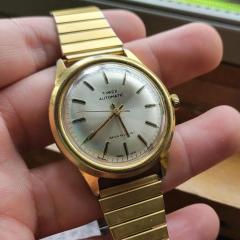-
Recently Browsing
- No registered users viewing this page.
-
Topics
-
Posts
-
By Neverenoughwatches · Posted
Yep, so we got a 10 1/2 ligne movement, thats the starting point now these bad boys books should hopefully get us across the finishing line . Next we need a good clear picture of that rocking bar, the setting lever and the setting lever spring. I've already got an idea what it might be. -
Kalle Slaap said he is visiting London this week in order to see the exhibition. I was keeping an eye open, hoping to meet him.
-
Thank you for your introduction and welcome to this friendly forum. We all look forward to your contributions and continued involvement.
-








Recommended Posts